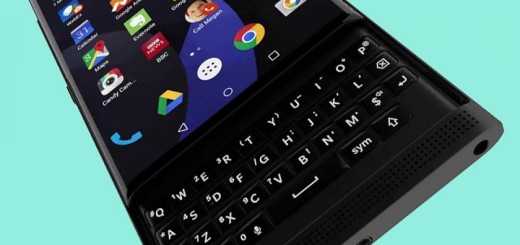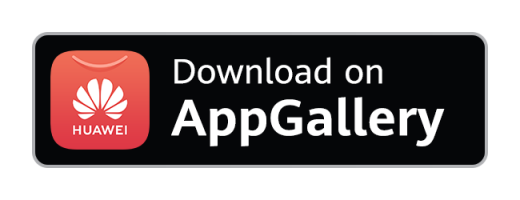 Mobile Phones have come a long way since they were first introduced on a wide scale to the public in the 1990s. Nowadays the market is flooded with smartphones, gone are the days of “Never Say Die” mobile phones, if you ask me.
Mobile Phones have come a long way since they were first introduced on a wide scale to the public in the 1990s. Nowadays the market is flooded with smartphones, gone are the days of “Never Say Die” mobile phones, if you ask me.
In case you did not know, the first hand-held mobile phone was actually showcased in 1973 by Motorola. The device weighed a 1 kg. The DynaTAC 8000x was the first mobile phone to be commercially available. It was released in 1983. Mobile Phones were popularized during the early 1990s. Since then mobile phones have become part of our daily lives. Imagine functioning without your cell phone today? Life would just not be the same.
South Africans were introduced to cell phones in 1994. Vodacom and MTN started providing mobile services in the same year. Since then Vodacom has grown to major force in the mobile industry. More than 35 million subscribers make use of Vodacom’s services in South Africa, Tanzania, Lesotho, Mozambique and the DRC. MTN has also evolved into a major player in the industry – nowadays MTN provides mobile phone services in 18 other countries (besides South Africa).
It’s amazing how popular this communication device has become over the years. To give you an idea: Back in 1990 there were only 12.4 million mobile phones in the world and according to figures released at the end of 2011 that figure has risen to over 5.6 billion. This just reflects how integral cell phones have become.
Remember those old “Never Say Die” mobile phones? The kind that didn’t break no matter how many times you dropped it? The ones that worked even though you accidently dropped it into water? Well, in case you don’t remember then, I’m giving you a little trip down memory lane. I’m featuring 3 Examples of “Never Say Die” mobile phones:
 Nokia 5110: Before this phone was released in 1998, mobile phones dominating the market were a lot bigger and less user friendly. This all changed when the Nokia 5110 was introduced. This phone had an excellent battery life and millions of users played “Snake” on it to kill time. It was also one of the first cellphones to feature a removable face plate.
Nokia 5110: Before this phone was released in 1998, mobile phones dominating the market were a lot bigger and less user friendly. This all changed when the Nokia 5110 was introduced. This phone had an excellent battery life and millions of users played “Snake” on it to kill time. It was also one of the first cellphones to feature a removable face plate.
The Nokia 5110 was extremely popular in South Africa. There is a huge chance that many of you reading this post had one of these phones and you’ll totally agree with me that this was of those “Never Say Die” mobile phones. In my opinion the Nokia 5110 was the main reason why Nokia gained such a huge market share in South Africa. The Nokia 5110 was discontinued in 2001 to make way for slimmer mobile phone models.
 Nokia 3310: This phone was introduced by Nokia in the fourth quarter of 2000. It replaced the Nokia 3210. The Nokia 3310 only weighed 113 grams. It had a vibrate function and featured 4 games. It also offered a choice of 35 ringtones and space for 7 custom tones (which could be downloaded).
Nokia 3310: This phone was introduced by Nokia in the fourth quarter of 2000. It replaced the Nokia 3210. The Nokia 3310 only weighed 113 grams. It had a vibrate function and featured 4 games. It also offered a choice of 35 ringtones and space for 7 custom tones (which could be downloaded).
The Nokia 3310 was popular for SMS messaging. It allowed long messages three times the size of a standard SMS text message (140 characters). Users could type 459 characters per SMS message. South Africans embraced this phone completely when it was first introduced. The battery life on this phone was also one of the main drawing cards.
It was one of the most successful Nokia phones. More than 126 million units were sold globally. Like the Nokia 5110, this phone was one of those “Never Say Die” Mobile Phones. It might not have had all the fancy features of the modern day smart phone, but it just kept on working, no matter how many times you dropped it.
 Samsung E250: This phone is also know as the Samsung SGH-E250 and was first introduced in 2006. It became one of the most popular mobile phones of its time. It was actually entry level version of the Samsung D900. The Samsung E250 only weighed 85 grams and had a 128×160 pixel 65,536 color display. An updated version of this phone was introduced in 2009.
Samsung E250: This phone is also know as the Samsung SGH-E250 and was first introduced in 2006. It became one of the most popular mobile phones of its time. It was actually entry level version of the Samsung D900. The Samsung E250 only weighed 85 grams and had a 128×160 pixel 65,536 color display. An updated version of this phone was introduced in 2009.
The Samsung E250 was built as a slide-out phone. The “Talk”, “End” , “Menu” and directional pad were on the top half of the phone. The bottom half, which slided out held the number keys. This classic modern phone was available in black, silver, pink, lilac and in crystal.
The Samsung E250 was a tri-band phone with MP3 / Polyphonic ringtones, a VGA 0.3 megapixel camera, internal 10 MB storage, a memory card slot (for a Micro SD card of up to 2 Gb), SMS/EMS Enhanced Messaging Service/MMS/E-mail messaging, Bluetooth, a speakerphone option, FM radio, Calculator, a USB 1.1 port (for data transfer, a calendar, an animated background, a MPEG 4 player, integrated web browser, etc.
If you compare the E250 against the Nokia 3310 and Nokia 5110, it’s amazing how far mobile phone technology progressed in only 6 years. The battery life on this phone wasn’t great, but it was still one of those “Never Say Die” Mobile Phones.
So, which one of these phones were your favorite? Comment on this post and let us know, we’d like to hear from you. If you’ve enjoyed reading this post, feel free to share it with your friends on Facebook and Twitter. Remember: Sharing is Caring. Also: Watch this space for regular updates in the Gadgets category on the Junk Mail blog.
Have a Mobile Phone you need to sell? Advertise it on Junk Mail! Post your free advert on Junk Mail today for immediate online exposure!







Data hub. Jy moet by paydotcom registreer. Asook by paypal. Dan die produkte bemark wat op paydotcom is. Indien enige iemand regoor die wereld die produk aankoop. Word jy n % betaal. Tot en met vandag het ek nog nie n sent gekry , vir enige produk wat aan gekoop is nie. Al het ek hope navra gehad. Die ander deel van Tissa. Jy moet maar net weer datahub bemark. Indien iemand aansluit. Ontvang jy R90 vir elke aansluiting. Ek het dit net n week gedoen. En besef hul het nie rerig n produk vir daardie R390 nie. Ek het Clientele life. IFA begin. N baie beter opsie.
Kan enige iemand my met inligting help oor Victory100. Ek sien niks op Hellopeter nie.